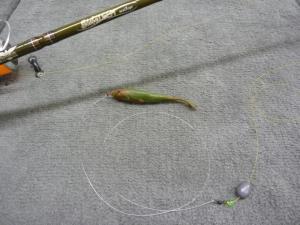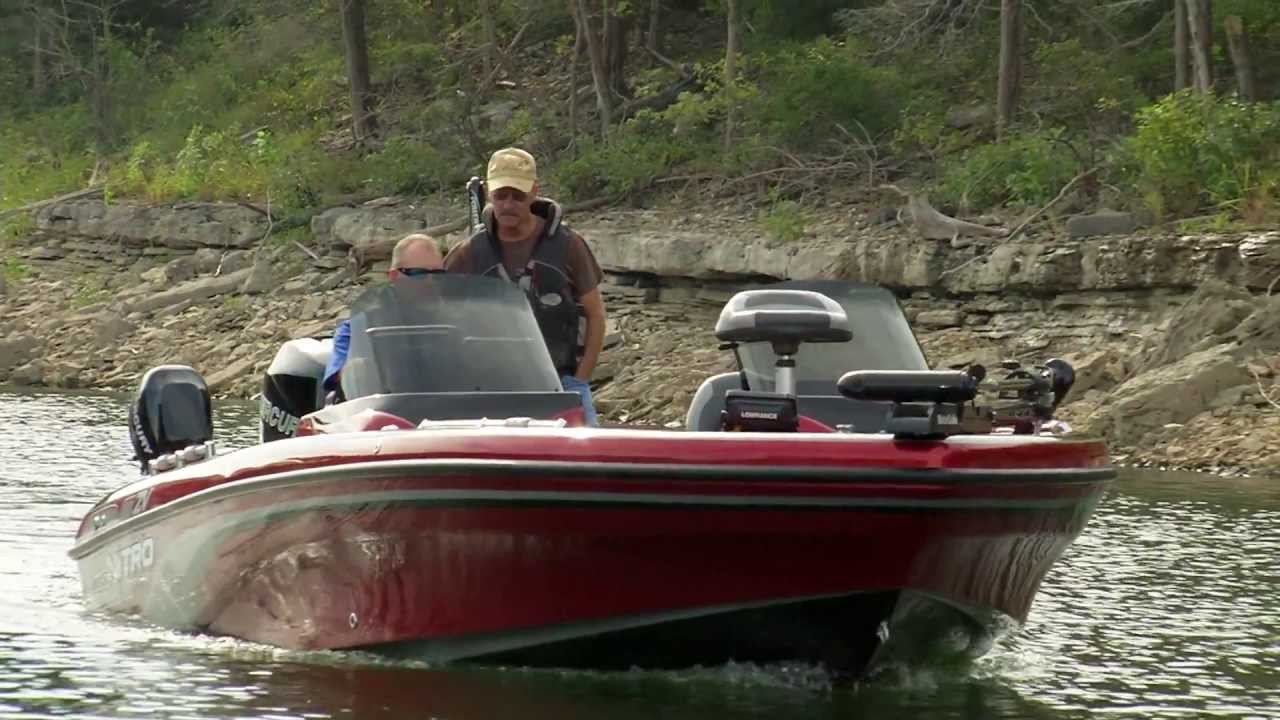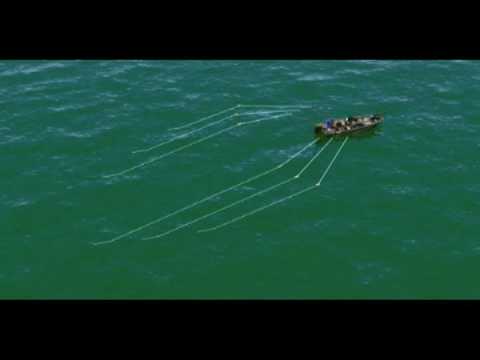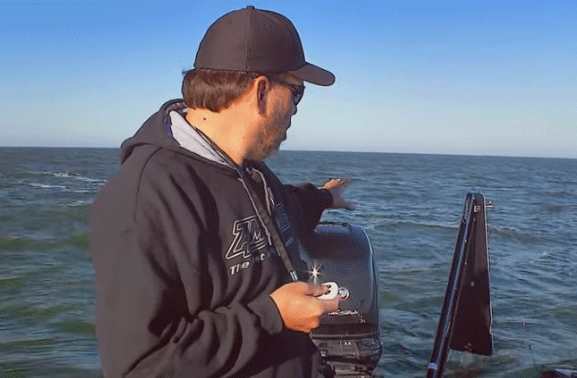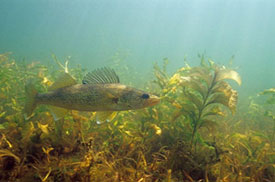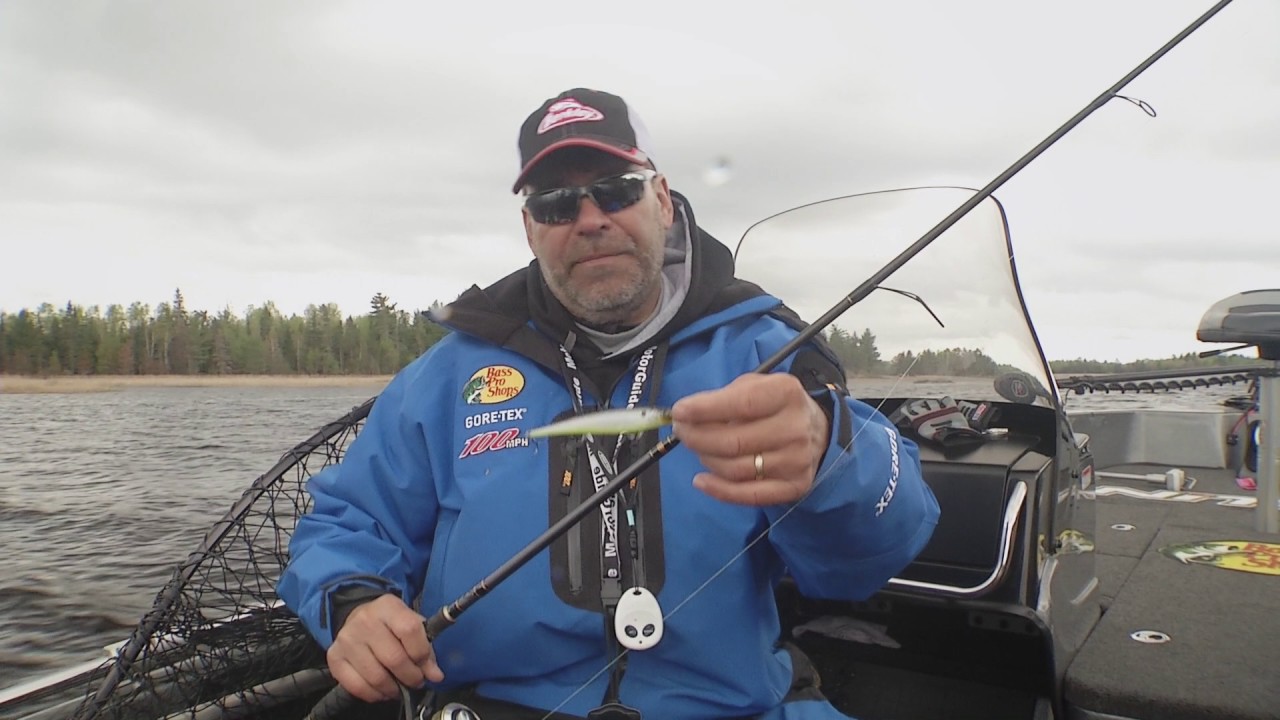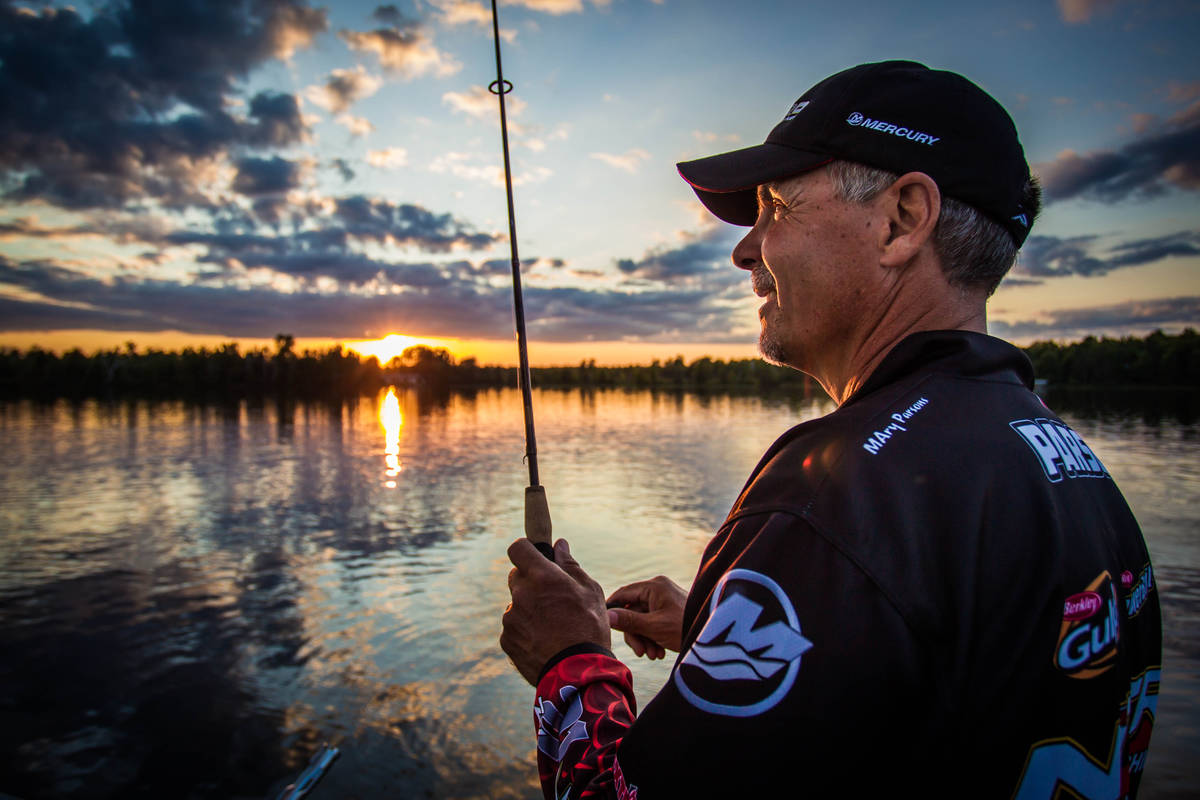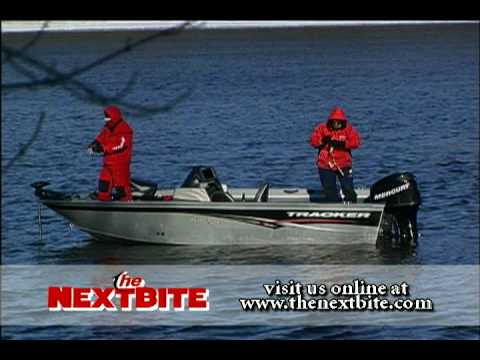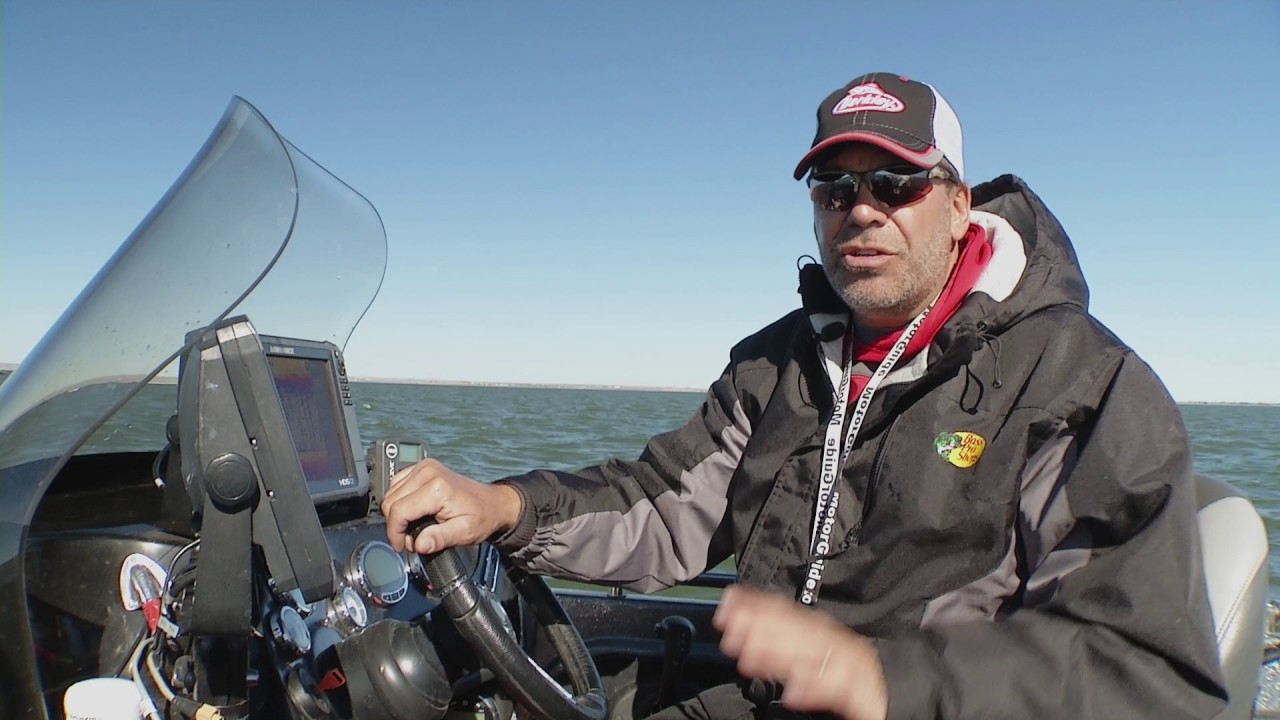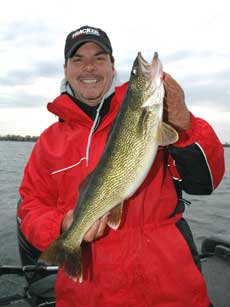 It’s a scenario that plays out on many walleye waters, particularly large reservoirs. Walleyes relating to a shallow break along the old river channel in the upper stretches of the reservoir. The break may go from four to eight feet, flatten out for a short distance, and then drop off into deeper water. Fish may be scattered all along the break, not really concentrating in any particular spot, so trolling becomes the most efficient method of contacting the greatest number of fish. Now if the walleyes were to be all been sitting in the same depth, say six feet of water along the break, it would make it a relatively simple task to pick a lure that would run just off the bottom with a particular length of line out to pick off fish on each trolling pass. However, its much more typical for the fish to not only scatter along the length of the break, but up and down the break as well. Some could be hanging at the top of the break, while others will be sitting off the deep edge. The challenge becomes finding a way to cover the entire depth range without constantly adjusting the amount of line out for the lures to follow the contour. The answer is a tactic most anglers would only consider a “deep water” technique … trolling lead core line.
It’s a scenario that plays out on many walleye waters, particularly large reservoirs. Walleyes relating to a shallow break along the old river channel in the upper stretches of the reservoir. The break may go from four to eight feet, flatten out for a short distance, and then drop off into deeper water. Fish may be scattered all along the break, not really concentrating in any particular spot, so trolling becomes the most efficient method of contacting the greatest number of fish. Now if the walleyes were to be all been sitting in the same depth, say six feet of water along the break, it would make it a relatively simple task to pick a lure that would run just off the bottom with a particular length of line out to pick off fish on each trolling pass. However, its much more typical for the fish to not only scatter along the length of the break, but up and down the break as well. Some could be hanging at the top of the break, while others will be sitting off the deep edge. The challenge becomes finding a way to cover the entire depth range without constantly adjusting the amount of line out for the lures to follow the contour. The answer is a tactic most anglers would only consider a “deep water” technique … trolling lead core line.
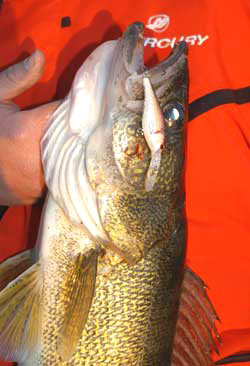 Total Solutions Technique
Total Solutions Technique
The technique is known as “contour trolling”. Unlike “open water trolling”, where baits are trolled over open water in search of suspended fish, contour trolling targets walleyes relating to structure. Baits are trolled in a manner to maintain their depth in close proximity to the bottom, while following the contour of the structure holding the greatest numbers of fish.
Trolling lead core in this situation gives you some definite advantages. Lead core’s large diameter and water resistance also makes it very “speed sensitive”. Slowing the boat speed allows the lead core to sink, taking the trailing lure deeper. Conversely, speeding up causes water to “push” the lead core up, allowing the angler to fish a lure shallower. Therefore, instead of constantly adjusting the amount of line out to cover varying depths, simply changing the trolling speed allows for movement of the lures up and down the break.
Another advantage to using lead core on structure is the fact that it has no stretch, making it very sensitive. Anytime you’re fishing tight to the bottom, there’s the chance your lure is going to pick up debris, causing it to lose its action and making it useless for catching fish. By combining the lead core with a leader of no-stretch line like Berkley FireLine, it’s easy to monitor the bait’s action by watching the rod tip. If the lure picks up a leaf or other bottom debris, the rod tip will stop vibrating, letting you know its time to reel that bait in and clean it off.
Keep your leader short when contour trolling. A ten foot leader may seem a bit short to most anglers familiar with lead core trolling, but in this scenario it’s absolutely the best way to go. The short leader gives the lead core more control over the bait’s depth and path, allowing you to work the lure in and out of small cups and contours along the break. On the other hand, if you’re dealing with clear water and less “snaky” contours, a longer leader would be a better choice.
Total Solutions Equipment
Of course fishing with lead core does require having the right equipment. First off, the lead core line you choose is important. 18 pound test is the most popular because it has the most lead with the smallest diameter. All the weights higher than 18# have the same size of lead insert, but sport heavier Dacron coatings. The key advantages of this is that the thinner diameter line will dive deeper and you can get more of it spooled on a reel. Since lead core is so bulky, large capacity line counter reels are preferred. Load the reel with a backing of Berkley FireLine. The thin diameter allows you to put on more line but 10 pound is very strong so you don’t have to worry about it breaking. Now tie in your Lead Core and spool on 10 colors (lead core is color coded every 10 yards). As mentioned above, a leader of 10 pound test Berkley FireLine completes the rigging. Team that up with long trolling rods featuring soft tip sections and moderate actions for absorbing head shakes and bulldog runs of a fish hooked well behind the boat.
As for the best crankbaits to use when contour trolling with lead core, experience has taught me that more often than not, it works better with smaller crankbaits than it does with larger models. Favorites include the Berkley Flicker Shad in 4 and 5 cm sizes. For some reason, the tactic works best on walleyes that are not terribly active, and the smaller lures just seem to trigger more bites. Also, in many reservoirs, breaks like this will be littered with snags, and the smaller baits have a tendency to glance off obstructions and snag less often than larger lures.
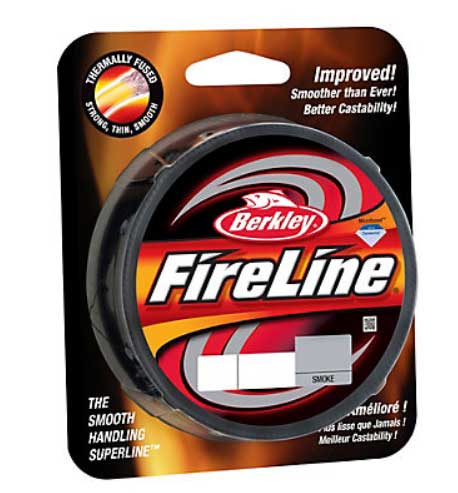
Berkley FireLine |
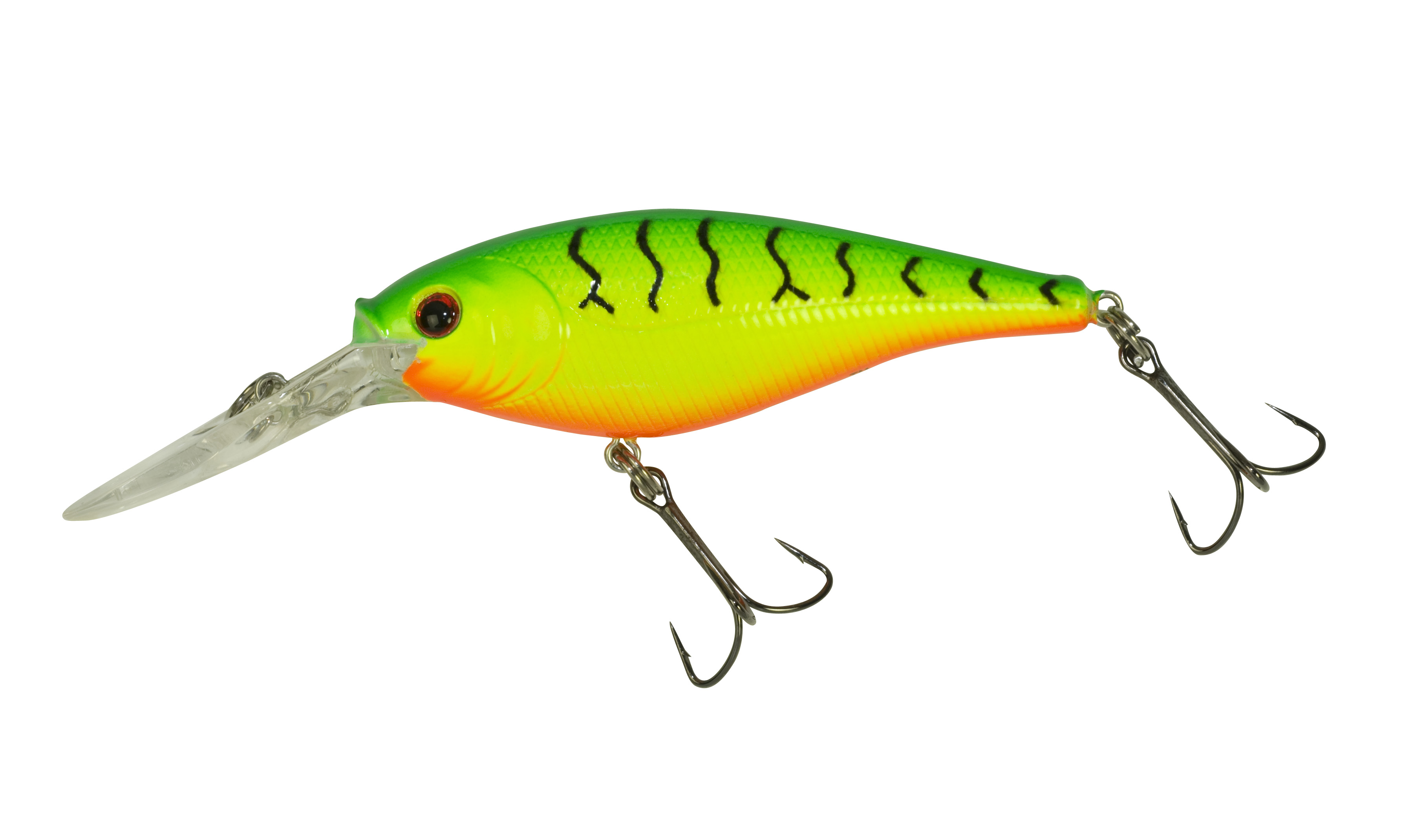
Berkley Flicker Shad |

